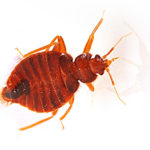
 Zika is the name of a virus spread by daytime-active Aedes mosquitoes, such as A. aegypti and A. albopictus. Zika virus is related to dengue, yellow fever, Japanese encephalitis, and West Nile viruses.
Zika is the name of a virus spread by daytime-active Aedes mosquitoes, such as A. aegypti and A. albopictus. Zika virus is related to dengue, yellow fever, Japanese encephalitis, and West Nile viruses.
The rise in the spread of Zika virus has been accompanied by a rise in cases of microcephaly and Guillain-Barré syndrome. First identified in Uganda in 1947 in monkeys, Zika was later identified in humans in 1952. The first large outbreak of disease caused by Zika infection was reported from the Island of Yap in 2007.
Even in the place where Zika virus was first discovered, its true origin is a mystery. The forest where Zika virus was first identified in 1947 is located near a swamp, 25 km (15 miles) away from the Ugandan capital, Kampala. A sign at the entrance reads: “Ziika [sic] Forest, Property of Uganda Virus Research Institute (UVRI).”
In 1947, when researchers were looking for yellow fever, they would put monkeys in cages on platforms. Periodically, they would collect blood samples from them and analyze them. That’s when they isolated a new virus on a captive rhesus monkey, which was not yellow fever. This new virus was named Zika, after the forest.
Since it was discovered, there have been small outbreaks of Zika in Africa and Asia. But the virus seems to have remained in those regions for nearly 60 years.
Then in 2007, a Zika outbreak occurred on Yap Island in Micronesia in the Pacific Ocean. It was the first time the virus had been reported outside its usual geographical range. How did it get there?
Zika virus is spread by Aedes aegypti mosquitoes. These can’t fly more than about 400 meters (1,300 feet), according to the WHO. They need human intermediaries to take the virus farther. One way it can travel is through the transportation of infected mosquitoes’ eggs.
Until the Brazilian outbreak, the disease wasn’t considered much of a threat. Most infected adults recover after a bout of rash or fever.
In February of this year, however, the World Health Organization (WHO) was forced to declare the outbreak a public health emergency, because there seemed to be a nasty side to Zika. Since then, scientists have confirmed that the Zika virus can, albeit in rare cases, cause serious birth defects and neurological disorders.
The other route the Zika virus can take is to travel in infected people. Only about 15% of people who catch Zika show symptoms, so they may easily spread the virus unknowingly. That happens when an infected person travels to a Zika-free area and gets bitten by a mosquito, which then begins a new cycle of infection. Zika may be transmitted through sex and blood transfusions.
Michael Deutsch MS, BCE
Urban Entomologist
Technical Director
Arrow Exterminating Company, Inc.





